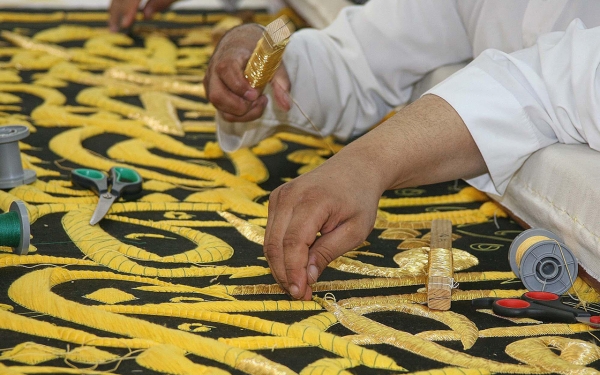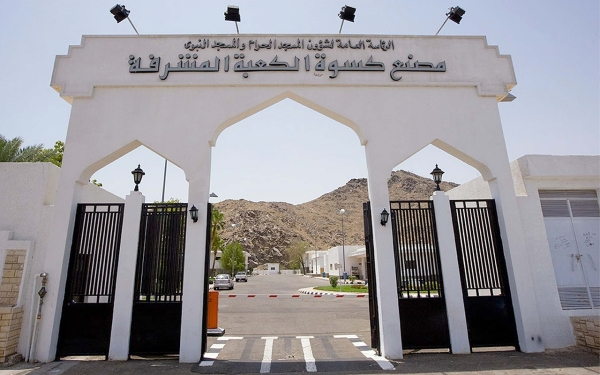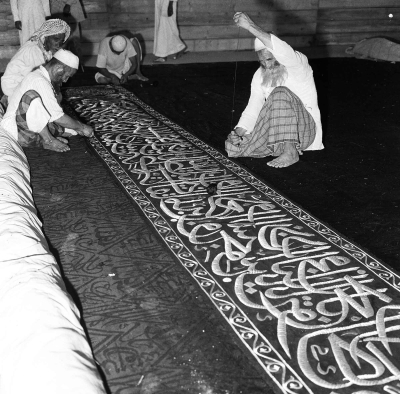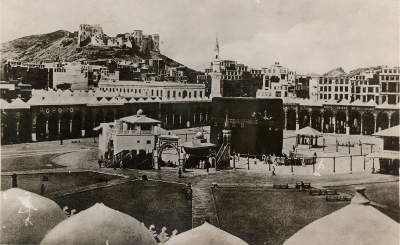



The Kiswa of the Holy Kaaba is manufactured at King Abdulaziz Complex for Kiswa, located in Makkah, Kingdom of Saudi Arabia. The complex was previously called the Kiswa Factory of the Holy Kaaba until 2018, the Custodian of the Two Holy Mosques, King Salman bin Abdulaziz al-Saud, amended its name to King Abdulaziz Complex for Kiswa in honor of the founding King Abdulaziz bin Abdulrahman al-Saud, who established the first institution dedicated to the sewing of the Holy Kaaba's Kiswa during the Saudi era in 1927.
The annual cost of the Kaaba's Kiswa currently exceeds SAR20 million. The garment weighs 850 kg. It is divided into forty-seven cloths with a width of 98 cm and a height of 14 m. It is sewn at the King Abdulaziz Complex for Kiswa, which falls under the umbrella of the General Presidency of the Grand Mosque and the Prophet's Mosque.
Since ancient times, the Kingdom has paid great attention to the Kaaba's Kiswa due to the Kaaba's religious significance to Muslims. This intensive care clearly manifests in the continuous efforts to develop the tools and capabilities of its manufacturing, as well as the selection and testing of its materials. The Kaaba is made of black silk threads, and is embroidered with gold and silver threads. Its sewing is completed in stages extending from six to eight months.
In the middle of May of every year, after the completion of its manufacturing phases, an annual ceremony is held at the factory, where the Kiswa is handed over to the head of the Sudnah (who is responsible for caring for its affairs,) who in turn delivers it to the General President of the Grand Mosque and the Prophet's Mosque. The Kiswa is changed annually during the Hajj season. As for the replaced Kiswa, it is divided into pieces, and offered by the government to exhibitions, museums, and dignitaries.
Related quizzes

